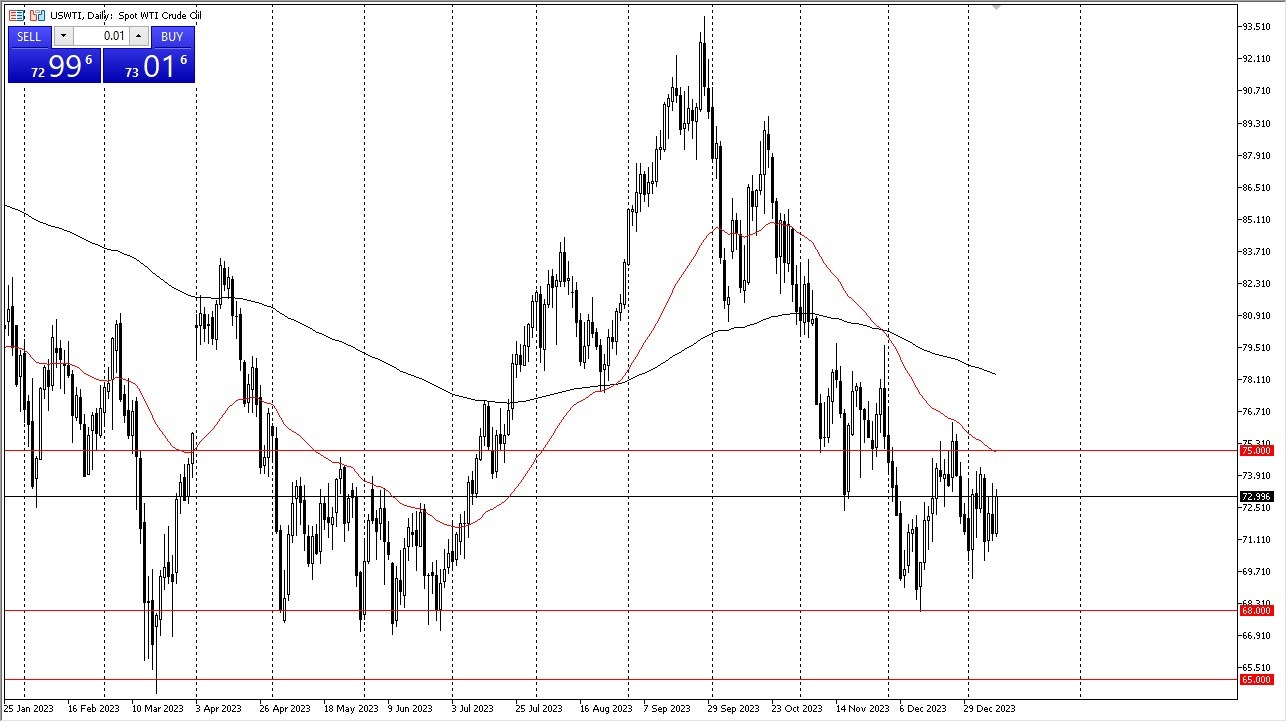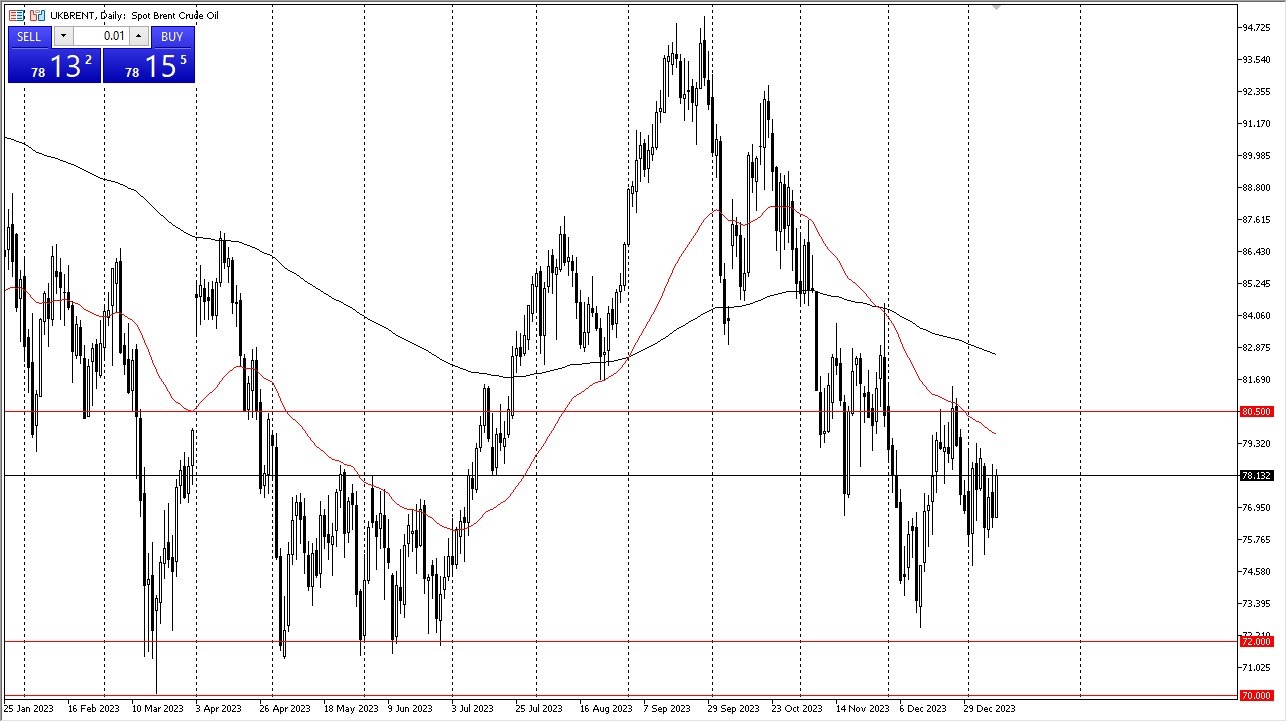- Crude markets have been experiencing a period of stability recently, characterized by sideways movement overall.
- This situation is not surprising given the complex factors influencing the crude oil market.
- Several key factors, such as fluctuating demand, changes in the value of the US dollar, and incidents in the Red Sea, have converged to create a challenging environment for traders and investors.
West Texas intermediate
Looking at the West Texas Intermediate Crude Oil Market, it's evident that oil prices have shown some upward movement early in trading sessions. However, the market appears to be in a state of indecision as participants grapple with the multitude of variables affecting oil prices. This uncertainty has made it challenging to take a confident stance on any position.
Currently, the market is closer to a significant support level than a substantial resistance level. This suggests that a strategy of buying in dips might be the preferred approach. The $75 level presents formidable resistance, coinciding with the 50-day Exponential Moving Average. If the market manages to close above this level daily, it could potentially trigger a move towards the 200-day EMA. Conversely, below the $68 level lies a crucial support level.

Brent
The situation in the Brent crude oil market mirrors that of WTI, with a similar consolidation pattern. There's a belief that this consolidation is indicative of accumulation in the longer term. Notably, the $72 level serves as robust support, while the $80.50 level above acts as a resistance point.
One major concern influencing the crude oil markets is the possibility of a slowing global economy, which would naturally reduce demand. However, the Federal Reserve's decision to adopt a more accommodating monetary policy could stimulate demand, particularly in the United States, eventually benefiting the global market.
Top Forex Brokers

The recent events in the Red Sea, including attacks on oil infrastructure, have also added an element of unpredictability to the market. These incidents have the potential to disrupt the flow of oil, impacting prices. However, it's essential to consider that there is currently an oversupply of oil worldwide, which somewhat offsets the impact of such incidents.
Another crucial factor to monitor is the value of the US dollar. Since the oil market is denominated in US dollars, fluctuations in the currency's value can influence oil prices. A strengthening dollar often leads to lower oil prices, while a weakening dollar can have the opposite effect.
Ultimately, the crude oil market is navigating through a complex web of factors, including demand fluctuations, monetary policy changes, geopolitical incidents, and currency movements. While these factors may seem contradictory, they collectively shape the direction of crude oil prices. Investors and traders must carefully analyze these variables to make informed decisions in this uncertain market environment.
Ready to trade WTI Crude Oil FX? We’ve shortlisted the best Forex Oil trading brokers in the industry for you.
